
Lifetime achievement: Charles Goodhart
LSE and BoE veteran has influenced central banking policy practices and frameworks all around the world
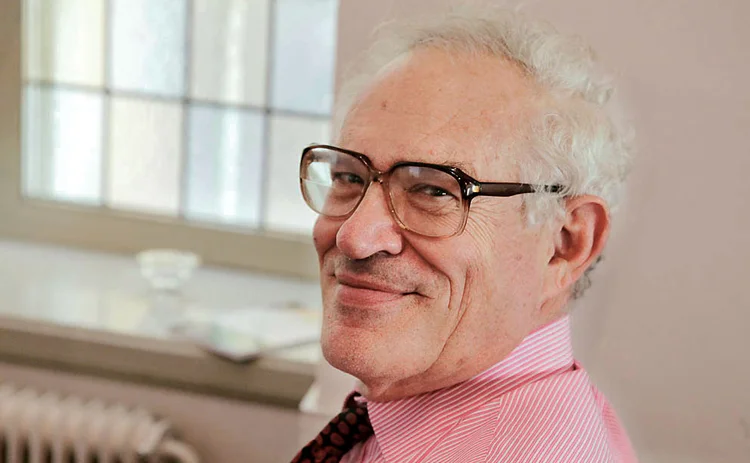
Charles Goodhart has made major theoretical and practical contributions to central banking through his work as an economist and economic practitioner for more than half a century. His career largely can be split into two lengthy terms of service: one in public policy, with the Bank of England (BoE); the other in academia, with the London School of Economics (LSE).
Goodhart has specialised in work related to monetary frameworks and central bank governance practices, as well as to in-depth academic research into financial markets, particularly in foreign exchange. While he has never held a top-level position at a central bank, his prodigious work has had a profound and pervasive impact on the monetary frameworks of several central banks, while also influencing a generation of central bankers, including many governors.
Goodhart’s influence on central banking has stemmed from his ability to link creative ideas to immediate practical decisions. He is characterised by colleagues and peers as a brilliant and generous person with a formidable ability to process complex concepts, smoothly linking theory with practice, and explaining it all in terms understandable by non-experts. He has forged long-standing relationships (and friendships) with countless central bankers, economists and financiers all over the world – often well beyond his official engagements. Goodhart’s influence is related to the intellectual challenge, and frequently in the background. He does not appear to have a hidden agenda, and makes little effort to seek attention. Some officials say their respect for Goodhart has only risen the longer they have known him. He is also renowned for patiently giving his time to train younger generations of officials interested in central banking, financial stability and the financial system, including work with Central Banking’s training and other services over many years.
Goodhart played an important role in the rediscovery of monetary policy (which had largely disappeared due to adherence to Keynesian philosophies) in the UK, the creation of Hong Kong’s peg and the establishment of the ‘New Zealand model’, where operationally independent central banks work to meet a specified monetary target set by government – something that would spread to Australia, Canada, Sweden and ultimately back to the UK. His research into FX markets highlighted the failings of traditional theory, and has contributed to policy-makers having a firmer grasp of their influence and impact when it comes to communication and intervention.
“For many decades, Charles Goodhart has been the éminence grise inspiring those responsible for the theory and practice of monetary policy,” says Mervyn King, former governor of the Bank of England.
From Cambridge to Bank
Goodhart’s early career was marked by a short spell (1963–65) as an assistant lecturer in economics at his alma mater, Cambridge University (he earned a first there, at Trinity College, and a PhD from Harvard), followed by another brief stint (1965–67) as an economic adviser at the UK’s Department of Economic Affairs. He then took up the position of lecturer in monetary economics at the LSE, the university to which he would devote much of his career years later.
After a two-year spell at the LSE, Goodhart became an adviser (1969–1980) and then senior adviser (1980–85) at the Bank of England, with a particular focus on monetary policy. During this time, he authored a paper, Problems of monetary management: the UK experience, published by the Reserve Bank of Australia in 1975, which stated: “Any observed statistical regularity will tend to collapse once pressure is placed upon it for control purposes.” The statement represents what is commonly referred to as ‘Goodhart’s law’. The statement appears to have been further adapted and generalised in 1997 by Marilyn Strathern to the more common form, “When a measure becomes a target, it ceases to be a good measure”. ‘Goodhart’s law’ appears to pre-date the Lucas critique.
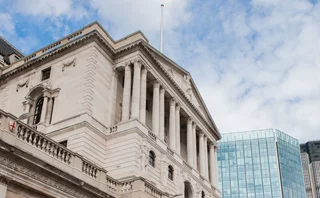
Goodhart has said he was the only monetary economist at the BoE, which he initially joined on a secondment. It was a troubled time for the UK economy, and Goodhart found his niche trying to explain internally what the outside (largely monetarist economists) were arguing, while also trying to explain the BoE’s internal viewpoint to outside economists.
“This meant that, within the bank (and perhaps the Treasury), I was perceived as almost the resident ‘monetarist’, while to the monetarists outside, notably at the Konstanz conferences organised by Karl Brunner and Allan Meltzer, I was seen as an ‘unreconstructed Keynesian’,” Goodhart said in an article, Whither now?, which this article draws heavily on. But the work was highly stimulating, and Goodhart stayed on as a permanent member of staff.
During his time at the BoE, he played a major role as monetary policy was ‘rediscovered’ at a time when structural changes in the financial system made any simple rule or framework relatively fragile. He encouraged a shift in the central bank towards greater unity between economics and market operations, helping to establish a solid analytical foundation to cope with the rapid changes in the economy – and the UK’s monetary regime – that were to follow.
Goodhart himself was clear on the need to combine an understanding of the real economy with a good grasp of finance. His attempt with Andrew Crockett (who went on to run the Bank for International Settlements) in the early 1970s to demonstrate the predictability of demand for money – which failed with the monetary shocks of 1972/3 – led him to a scepticism for simplistic approaches. Later, when the Margaret Thatcher government pushed for a switch from controlling broad money to base, Goodhart opposed the move. He recognised that bank lending decisions were a crucial factor in determining the broad money supply, and warned against the loss of control that targeting narrow money supply (or M0) would entail. He ultimately won the argument.
Ian Plenderleith, a former executive director at the Bank of England responsible for financial market operations and deputy governor of the South African Reserve Bank, says Goodhart continued to promote “the importance of money and credit in analysing economic developments, not only when it was fashionable in the 1970–80s, but consistently thereafter, when money came to play less of a role in economic models”.
Goodhart’s efforts to unify economics and finance at the BoE in the early 1980s also later helped underpin the development of modern ideas on central banking, not least the role of risk in policy-making. He noted the rational expectations hypothesis implied a major challenge for forecasters, with its emphasis on the role of unanticipated shocks. Instead, “where economists really can help is in the analysis of risk”, Goodhart wrote.
The Hong Kong peg
Goodhart was still a senior adviser at the BoE when he became involved in the monetary affairs of the then-UK colony, Hong Kong, which, ultimately, was returned to China in 1997.
Handover negotiations between the UK prime minister Thatcher and chairman of China’s Central Advisory Commission Deng Xiaoping took a turn for the worse in 1983. The fallout sparked a monetary crisis in Hong Kong, as international investors withdrew funds, which in turn caused a freefall in the Hong Kong dollar (it fell from HK$6.5 to the US dollar at the start of the year to a low of HK$9.6). The decline in the value of the currency caused a sharp rise in local prices and a property slump, making the Hong Kong Association of Banks wary of raising interest rates too sharply for fear of collapsing asset values. Trust in the banking system started to fade, and the government had to step in to stop a ‘run’ on Hang Lung Bank (now part of DBS).

Something needed to change. The Hong Kong colonial government sought guidance from Whitehall, and the UK dispatched Goodhart from the BoE and David Peretz from the Treasury to assist. According to an account by Goodhart, on arrival, they learned that a senior monetary adviser, Douglas Blye, had already publicly committed to achieving monetary reform – but there were no clear plans as to what it should be.
John Greenwood had put forward the blueprint of a currency board linked to the US dollar. It had support from some monetary officials in Hong Kong, but Goodhart said chief secretary Philip Haddon-Cave and financial secretary John Bremridge were wary of moving without a green light from the monetary experts from London. Goodhart and Peretz duly assessed the pros and cons of the proposed ‘link’ to the US dollar, and were confident that Hong Kong’s highly flexible markets could adjust to monetary conditions and interest rates set by the Federal Reserve Board based on US monetary concerns – despite the vast differences in the Hong Kong and US economies. Moreover, a link to the US dollar – rather than to sterling – would be more palatable to the authorities in Beijing. Goodhart and Peretz worked on the transitional and technical details of implementing a currency board, collaborating closely with commercial bankers, notably from HSBC.
“Goodhart endorsed a plan articulated then in the Monetary Affairs Branch of the [Hong Kong] Government Secretariat, chiefly by Tony Latter, the deputy secretary, who was seconded from the Bank of England, after some discreet consultation within Hong Kong (including with the note-issuing banks and with John Greenwood),” Joseph Yam, a principal assistant secretary at the time, acting as liaison officer for Goodhart and Peretz, tells Central Banking.
Ultimately, the Hong Kong currency was fixed at a rate of HK$7.8 per US dollar on October 17, 1983. The peg has stayed in place for almost four decades, although since 2005, the Hong Kong dollar has been allowed to trade in a range between HK$7.75 and HK$7.85 per US dollar.
“Charles was highly knowledgeable and professional, and, with David, produced an insightful and supportive report to John Bremridge, which formed the basis of a submission to the Executive Council for the introduction of the linked exchange rate system,” says Yam, who went on to become chief executive of the Hong Kong Monetary Authority (HKMA).
In what appears to be a pattern in Goodhart’s working life, the UK economist kept in correspondence with Yam, offering thoughts and advice on monetary frameworks, long after his formal interactions ended.
“In my subsequent developing roles in central banking in Hong Kong, I have kept in close touch with him ever since [1983], as the original arrangements put in place were, strictly speaking, inadequate for achieving the purpose they were intended, and modifications had to be introduced: for example, taking over the interbank clearing function from HSBC so that the future HKMA would have full control over the whole of the monetary base,” says Yam.
“There are delicate political and professional issues involved, and Charles had always been helpful in these formal (with him at the Bank of England) and informal (with him back at the LSE) consultations.”
Independence in New Zealand
Goodhart also played an instrumental role in central banking independence in New Zealand.
He first visited the country to participate in the Reserve Bank of New Zealand’s 50th anniversary celebrations in the mid-1980s. A few years later, New Zealand’s Labour government proposed a law to give the RBNZ autonomy to set interest rates, in pursuit of an inflation target agreed between the finance minister and the central bank governor. This radical proposal appears first to have been made by finance minister Roger Douglas.
The RBNZ’s then-chief economist, Peter Nicholl, chaired a four-person working group to establish how to convert this concept into law – a process that took nearly two years.
“We used Charles Goodhart as our main sounding board for our ideas. We contacted him frequently, and I met him in the UK at least twice during those two years,” Nicholl tells Central Banking.

Goodhart also played a critical part in getting the bill passed – and by a resounding majority. Nicholl recalls that David Sheppard, professor of money and banking at Victoria University, Wellington, was expected to criticise the proposed framework in front of a parliamentary select committee.
“We arranged for Charles to come to New Zealand and give evidence to the committee also,” Nicholl tells Central Banking.
Nicholl says he introduced Goodhart to the committee chairman just before Sheppard gave his submission, and then the pair sat at the back of the room to listen: “The first thing Sheppard said was that ‘no major international monetary economist would agree with what the RBNZ was proposing’.”
“The chairman asked him who he regarded as major monetary economists. The first name he said was ‘Charles Goodhart’. The chairman said: ‘Charles Goodhart will be able to speak for himself tomorrow.’ I can still remember the look on Sheppard’s face when he turned around and saw that Charles wasn’t in the UK, but in the same room.”
Goodhart supported the framework. A key point he made was that it was democratic, as the government set the target and the RBNZ was given operational independence.
“He said, in this respect, it was a superior framework to that which was being proposed for the ECB,” according to Nicholl, who later went on to become deputy governor of the RBNZ and governor of the Central Bank of Bosnia and Herzegovina.
Goodhart’s evidence meant the final vote was resoundingly in favour of the new approach – in part, it appears, because some sceptical colleagues of opposition finance spokesperson Ruth Richardson changed their positions after Goodhart’s appearance, Nicholl tells Central Banking. The bill was approved in December 1989, and the act came into law on February 1, 1990.
At a meeting to commemorate New Zealand’s 25th anniversary of inflation targeting at the Bank of England in 2014, Goodhart told Central Banking that he had urged the select committee to link the RBNZ governor’s salary to the central bank’s success in achieving its inflation target – a so-called Walsh contract. But he said that the authorities in Wellington turned it down, as they feared it would raise a communication challenge if the governor’s pay rose at a time when others faced a squeeze in their disposable income.
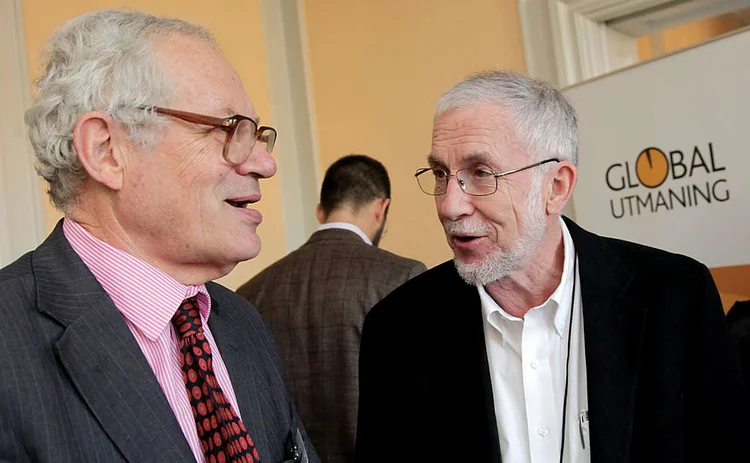
“The idea of giving me a big bonus when inflation reached the agreed target was abandoned, and I suspect was never seriously considered, because of the likelihood that moving from a high rate of inflation to a rate between zero and 2% would be accompanied by a temporary but significant increase in the unemployment rate,” Don Brash, the RBNZ governor (1988 to 2002) who had to implement the new framework, tells Central Banking.
But Goodhart appeared to view the episode as demonstrating that “the short-term demand for higher employment, without proper concern for medium-term price stability or sustainable growth, emanated from the general public (and parts of the press), as much as, or rather than, from supposedly self-seeking politicians”, he said.
Goodhart appeared to favour an approach where – publicly and in writing – the government (rather than the central bank) determines the quantified inflation objective, and the central bank is then given the autonomy to vary its policy instruments to achieve the target. This approach gained traction at many central banks in the 1990s.
“The design of the ‘New Zealand model’ had a big influence on the design of central banking arrangements in several other countries, including Canada, Australia, the UK, Sweden, etc,” says Brash.
In practice, but not in theory
While Goodhart supported an inflation objective set by the political authorities, he has remained sceptical of the main theoretical analysis underpinning it – the ‘time-inconsistency’ argument. Time inconsistency in economics occurs when preferences change over time in such a way that a preference can become inconsistent at another point in time.
Goodhart has stated that there is “little compelling empirical evidence” that governments have sought to use “expectational inertia” to trick people to work harder, “in pursuit of a short-run electoral feel-good factor, and, indeed, little evidence, given the long lags with which monetary policy works, that they could do so even if they wanted”.
Indeed, Goodhart has made it clear that specific effects of monetary policy actions are often uncertain because of long lags, yet, in most time-inconsistency models, “monetary authorities can control prices instantly and perfectly! Absolute nonsense”, Goodhart said.
But he accepted that politicians were more likely to introduce interest rate hikes too late to curb inflation, particularly in the run-up to elections. Moreover, inflation targeting by operationally independent central banks provided an opportunity for monetarists and Keynesians to come together to support the framework. Monetarists could view it as representing a monetary target after adjustment for the unforeseeable and unforecastable variations in the velocity of money, which had complicated and confused the application of monetary targets in the 1970s. And neo-Keynesians could apply an inflation target in terms of a direct link between official interest rates and output and prices, Goodhart said.
Life at the LSE
The arrival of Robin Leigh-Pemberton as governor of the Bank of England resulted in John Flemming being chosen over Goodhart as executive director for economics. Goodhart’s career progression appeared blocked, and he recalled Flemming’s appointment as “a severe blow” that prompted his decision to return to academia – much as he admired Flemming as a both a friend and an economist.
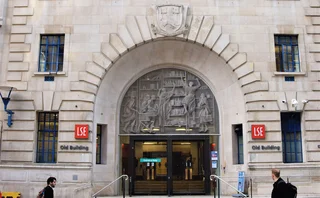
Goodhart secured a post as the newly minted Norman Sosnow Professor of Banking and Finance at the LSE, where he primarily focused on the analysis of foreign exchange markets as well as central bank autonomy. Goodhart and Mervyn King set up a research entity in 1987, the LSE’s Financial Markets Group – funded by City of London institutions such as Citibank – that focused on policy research into financial markets, aimed at supporting the longer-term development of the City. Goodhart provided the intellectual firepower. And he continued his involvement, including taking on some of the logistical work, after King moved to the BoE in 1991. After David Webb took over as director of the FMG, its focus moved more towards finance versus economics, but Goodhart has remained heavily involved to this day.
FX research
Although Goodhart is well known in the central banking community for his research on an array of subjects – monetary policy, the Exchange Rate Mechanism and monetary union, the role and function of central banks and financial stability – much of his academic publishing in the late 1980s and 1990s was on the analysis of foreign exchange markets. In particular, his work has investigated issues with the efficient-market hypothesis and his observation that ‘news’ only seemed to account for only a small proportion of FX market movements. Working with a series of PhD students, he pioneered the use of high-frequency data to study how news shocks propagated through markets.
Goodhart built his own data series with the help of Reuters, and later collaborated with a Swiss firm, Olsen and Associates, which had built an even more extensive record of high-frequency FX and interest rate data. At the time, the data was available at “periodicities less than five minutes”, Goodhart wrote, which seems glacial by modern standards, but at the time was path-breaking. He worked with Olsen to launch a series of conferences on high-speed data. In 2000, he published many of the results of this work in The foreign exchange market: empirical studies with high-frequency data, co-edited with Richard Payne. But Goodhart’s work on FX markets was about to be interrupted by a return to practical policy-making.
The Old Lady’s makeover
In 1997, the UK’s Labour government determined to give the Bank of England operational independence to follow an inflation target set by the government. Goodhart does not appear to be directly involved in establishing the BoE operational independence, although his work must have had some influence. And his reputation in monetary affairs made him an obvious choice to become a debut external member of the newly formed Monetary Policy Committee (MPC), where he was described by a fellow member as “a very sensible and influential member” until 2000.
Shortly after his role on the MPC, Goodhart officially retired, becoming emeritus professor of banking and finance at the LSE’s FMG in 2002. But he has continued producing copious volumes of articles as well as books.
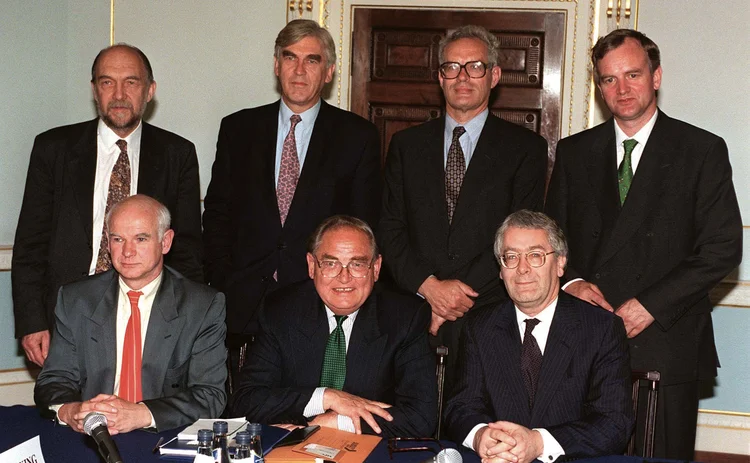
Goodhart has also participated in parliamentary reviews on monetary policy approaches, such as one for the BoE in 2007, as well as conducting external evaluations of central bank monetary policy frameworks – one example is the review of Sveriges Riksbank in 2011. Even if he is not formally involved in the process, he takes a keen interest in the output, for example, offering a critique of the Warsh Review of the BoE’s monetary policy process in 2015. He has also written extensively on financial regulation and stability, including the appropriate size of central bank balance sheets when looked at via a financial stability lens. Most recently, he conducted research into banknote stockpiling during the Covid-19 pandemic.
Overall, Goodhart has pointed out that inflation-targeting regimes performed better than many would have expected until 2007. But he believes responses required to address issues raised during the global financial crisis – taking unconventional policy measures, such as asset purchase, while pushing rates towards the zero lower bound – have had implications not just for central bank profitability and debt management, but also for the workings of financial markets. Goodhart wrote that these new aspects seem “to lie on the boundary between monetary and fiscal policies”.
Goodhart is also wary that those that have not experienced inflation may be blinded to the risk of weakened inflation anchors in an era of a declining neutral rate of interest. He argues with Manoj Pradhan in their 2020 book, The great demographic reversal: ageing societies, waning inequality, and an inflation revival, that China’s rise created a labour supply shock to the world economy that “dictated the path of inflation, interest rates and inequality over the last three decades”. The concern is that, as China ages and de-globalisation gathers pace, higher wages and inflation will return, since low-cost labour from other emerging markets and increases in productivity through technology will fail to compensate for overall falling labour productivity. If governments start to address inequality in the aftermath of the pandemic, this could increase the political power of labour as workforces demand better health, social protection and wages relative to capital.
“In essence, Goodhart and Pradhan argue that policy-makers should be prepared for an increase in inflation, wages and interest rates as the ‘great reversal’ occurs,” says Andrew Sheng, an international adviser to the China Banking and Insurance Regulatory Commission and China Investment Corporation, in a recent Central Banking article.

“The $12 trillion of government support to the economy worldwide, financed largely by a $7 trillion expansion of central bank balance sheets, may not be sufficient.”
This potential, sharper-than-expected rise in inflation, combined with a blurring of independence in the field of financial stability, including the recent push into tackling climate risk, may raise questions about the future independence of central banks. So far, they have managed to defuse financial crises, but any failure may force governments to take back the conduct of policy.
As Goodhart has said: “For the time being, the Bank of England, like most other central banks, has done well enough to maintain operational independence. Whether that can continue is yet to be determined.”
The Central Banking Awards were written by Christopher Jeffery, Daniel Hinge, Dan Hardie, Rachael King, Victor Mendez-Barreira, William Towning and Alice Shen
Only users who have a paid subscription or are part of a corporate subscription are able to print or copy content.
To access these options, along with all other subscription benefits, please contact info@centralbanking.com or view our subscription options here: subscriptions.centralbanking.com/subscribe
You are currently unable to print this content. Please contact info@centralbanking.com to find out more.
You are currently unable to copy this content. Please contact info@centralbanking.com to find out more.
Copyright Infopro Digital Limited. All rights reserved.
As outlined in our terms and conditions, https://www.infopro-digital.com/terms-and-conditions/subscriptions/ (point 2.4), printing is limited to a single copy.
If you would like to purchase additional rights please email info@centralbanking.com test test test
Copyright Infopro Digital Limited. All rights reserved.
You may share this content using our article tools. As outlined in our terms and conditions, https://www.infopro-digital.com/terms-and-conditions/subscriptions/ (clause 2.4), an Authorised User may only make one copy of the materials for their own personal use. You must also comply with the restrictions in clause 2.5.
If you would like to purchase additional rights please email info@centralbanking.com test test test




